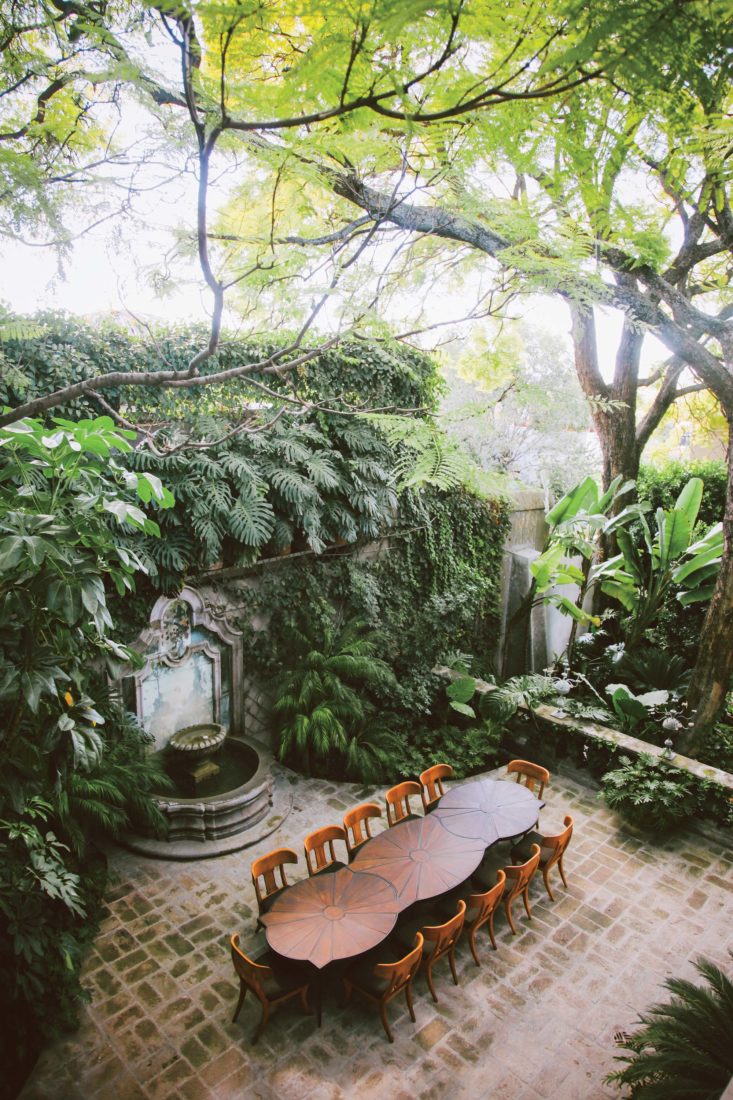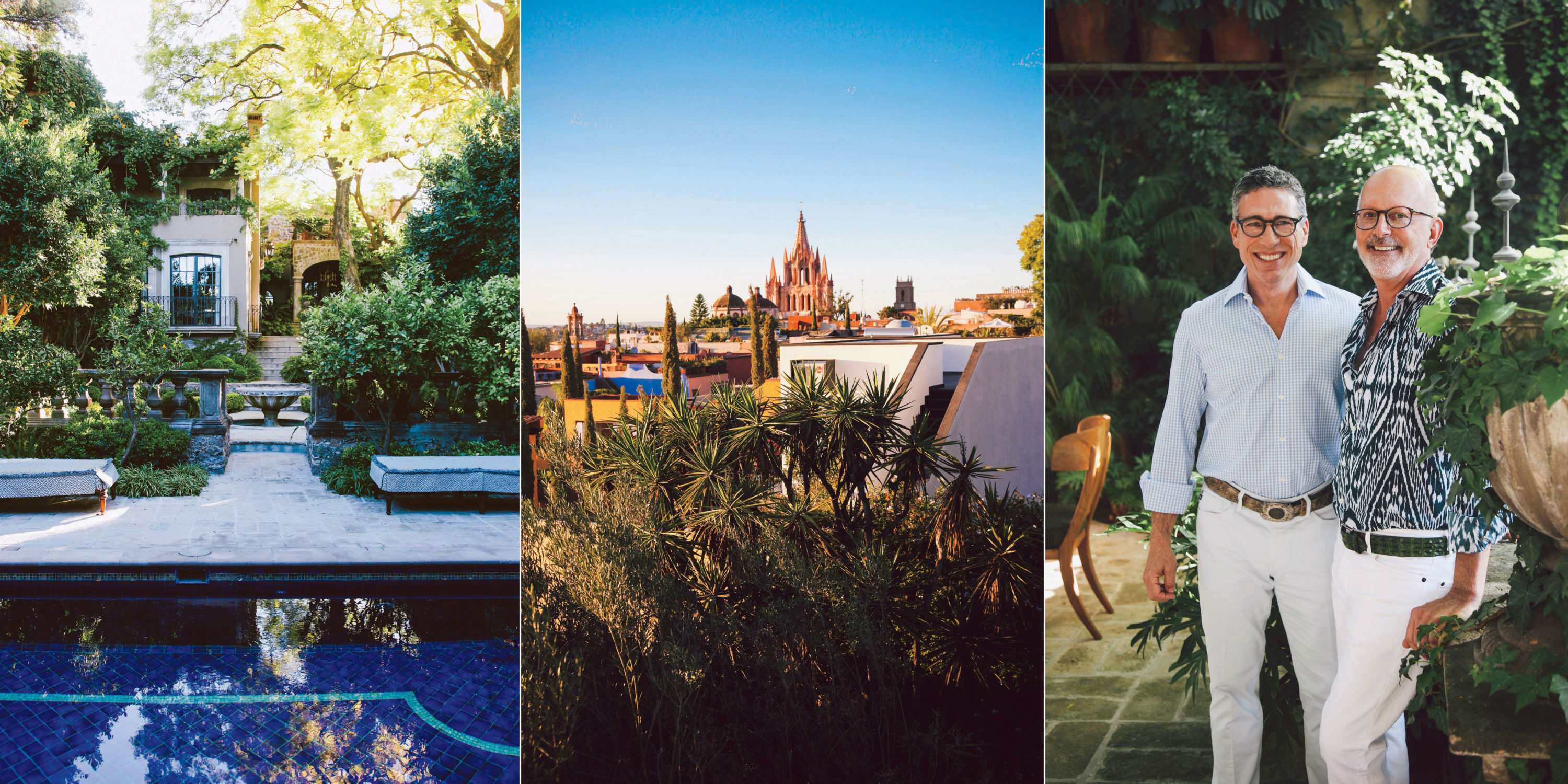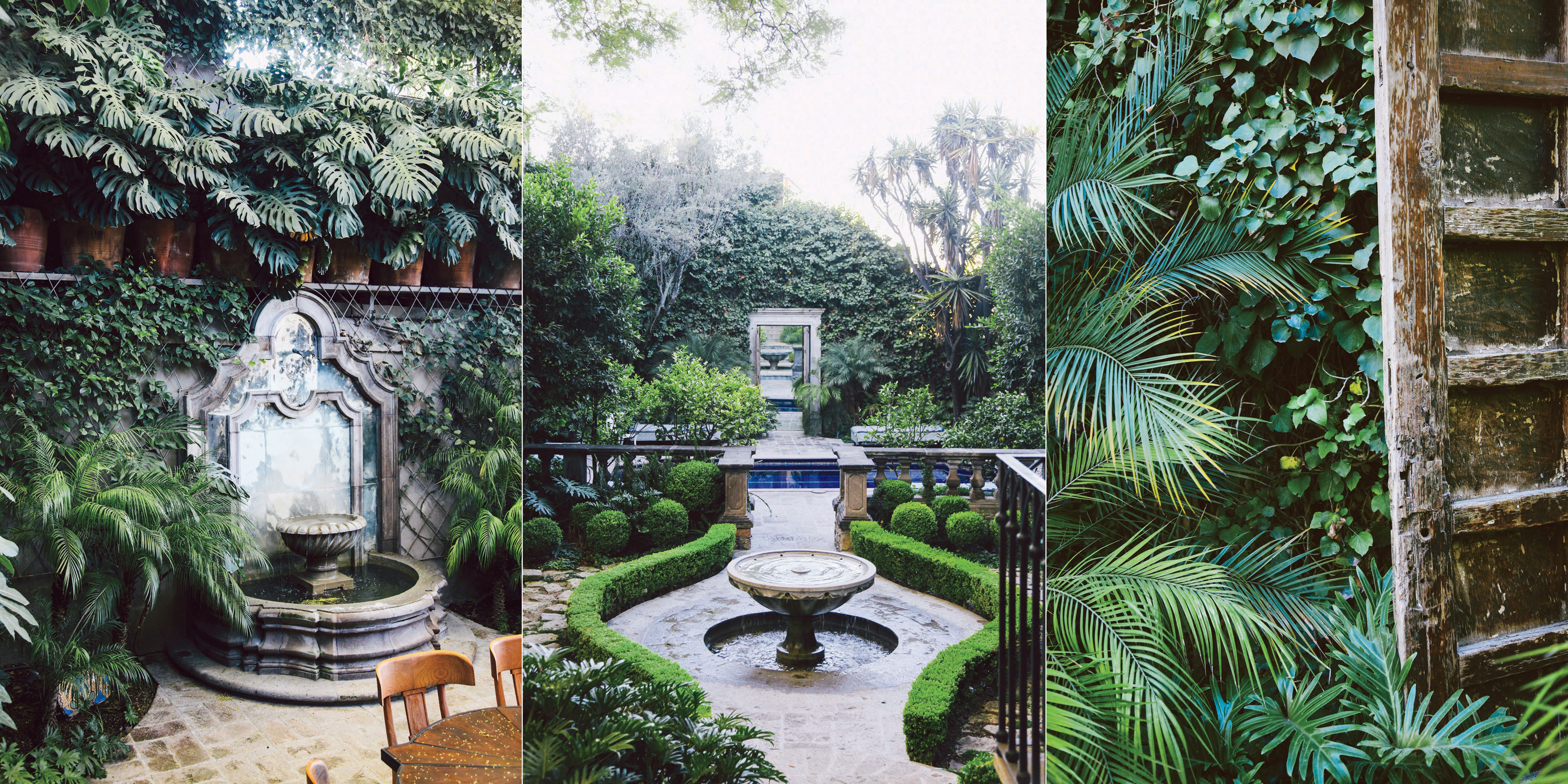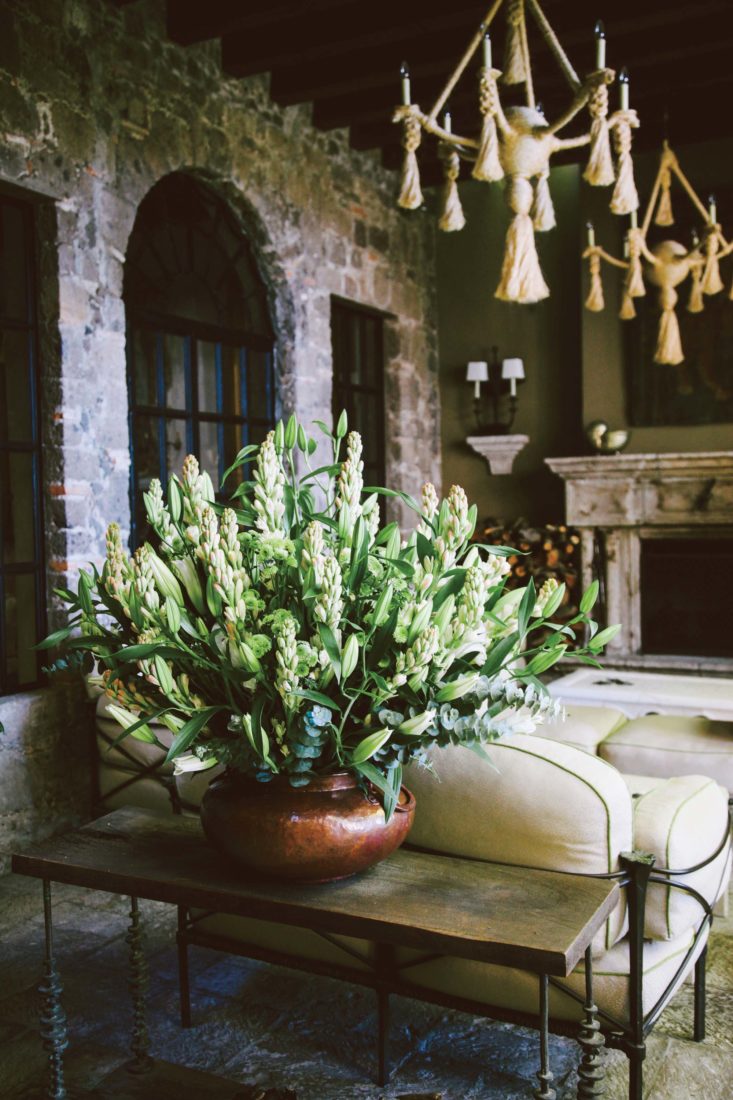Party Al Fresco: Inside a Tropical Garden / Garden & Gun April – May 2018
Summers in Mississippi spark a fiesta-ready Mexican paradise

Giant jacaranda trees overlook the dining terrace, which features a teak-and-steel table Fisher designed that can be pulled apart into three separate pieces for smaller gatherings.
“We bought it for the trees,” says Andrew Fisher. Back in 2011, Fisher and his husband, Jeffry Weisman, were looking at houses in San Miguel de Allende, Mexico. Lots of houses. More than two dozen during one week. They saw plenty of contenders, but one stood out for its trio of century-old jacarandas, with their electric-blue canopy of high, twisting branches. “We’re designers. We could do anything with the house, but I’d never be able to grow trees like those in my lifetime.”
Seven years later, those ancient jacarandas are a focal point in a garden of many wonders.
The overarching wonder is how home and garden meld into one, a reality that’s possible in this high-desert city, where spring seems to linger year-round. Located blocks from San Miguel’s main plaza, Fisher and Weisman’s home, named Casa Acanto for its acanthus-leaf design motif, sits on a cobblestoned street cheek by jowl with other nondescript plaster facades. Unlike most of its Spanish-colonial neighbors, which were built around central courtyards, Casa Acanto, originally an eighteenth-century tannery, is L-shaped and backed by a large terraced garden enclosed in towering, vine-choked walls. Nearly every room opens to the outdoors. “The garden is the hallway of the house,” says Weisman.

From left: The pool, build with cobalt-blue tile from the nearby town of Dolores Hidalgo; La Parroquia de San Miguel Arcángel on San Miguel’s main plaza, viewed from a two-story casita beside the pool; the home’s owners, Jeffry Weisman and Andrew Fisher.
And that hallway is a well-groomed jungle. The plants here are lush and evocative. Algerian ivy and plumbago—a vine-like shrub with blue, geranium-esque flowers—clamber up a south-facing wall. A row of potted philodendrons on a high shelf tumble down another wall. Clivia creeps among boxwood and pittosporum hedges. With the flora comes fauna, especially birds, including morning-singing kiskadees, vermillion flycatchers that hover around doorways snatching insects from spiderwebs, and a pair of white owls that nest high above in the jacarandas.
Fisher, the driving force behind the garden design, drew inspiration from boyhood summers and Christmas holidays spent near Jackson, Mississippi, with his grandmother and great-aunt at his maternal homeplace. The Michigan native marveled at how the azalea hedges and boxwoods and yucca plants—most of which turn up at Casa Acanto—grew in the South with abandon. After living—and gardening—for years in Northern California, Fisher has found San Miguel de Allende to be even more of a hothouse than Mississippi.

Fisher sculpted this acanthus-leaf spout on the dining terrace fountain; a mirror reflects a fountain carved from a single block of local limestone; the open antique door on the garden wall.
“Everything here grows like kudzu,” he says. “In California, a mature garden usually takes about seven years to establish. Down here it takes seven months. Plants grow year-round and just keep growing and growing and growing.”
The couple now calls both San Francisco and Mexico home, and they spend at least half their time in San Miguel. When here, they pass their hours in the garden, reading, entertaining, relaxing. Different nooks suit different moods. The grotto-like hot tub, for instance, shrouded by elephant ears and large-leaf philodendrons, “is not a social space,” Weisman says. “It’s super quiet. You soak in the hot water, looking up at the jacarandas and giant bird-of-paradise flowers. It’s like meditation.”
The dining terrace, on the other hand, serves as an ideal setting for cocktail parties and long, leisurely dinners. “It has such good juju,” Weisman says.
Evenings begin in the sala abierta, or outdoor living room, with glasses of tequila around a mesquite-wood fire in a massive limestone hearth. When the flames have died and the coals are glowing red, Fisher lowers an Argentinean grill and cooks chicken or prawns or goat, serving guests at a long table he designed out of steel and teak.

The sala abierta.
During one dinner party, the power went out, as it is wont to do. “We lit the entire garden—stairs, paths, fountains—with candles,” Fisher recalls. Around that time, Casa Acanto’s owls called out from the branches above. “It was magical, like you were in a fairyland.”
Text by Logan Ward / Photography by Amy Dickerson
